About Myofascial Pain
Your muscles and fascia together form a network of tissues called the myofascial system. Both muscles and fascia have elastic properties that allow them to stretch and contract as you move, providing biotensegrity – tensile integrity that guides and controls movement.
Trauma, overuse and disuse can cause myofascial tissue to dysfunction, inhibiting movement and causing pain. But myofascial tissues are equipped with biological factors that enable them to heal from injury and regain their smooth and elastic properties. Advanced therapies and technologies at NYDNRehab help to accelerate myofascial healing, to enhance stability and restore pain-free mobility.
Muscles consist of contractile bundles of myofibrils, arranged in a specific way to optimize force production. Bundles of muscle fibers are encased in a layer of fascia, separating them from other muscle bundles and from other structures. Fascia also exists independent of muscle, serving to connect and integrate various body structures and organs.
Muscle fibers work together in motor units – groups of muscle fibers that are simultaneously activated by a single motor neuron. Muscles are embedded with neural motor units that signal groups of muscle fibers to contract in coordinated patterns, to produce specific movements. Until recently, the motor unit was considered to be primarily responsible for movement control. However, emerging research now recognizes the important role of fascia in motor control.
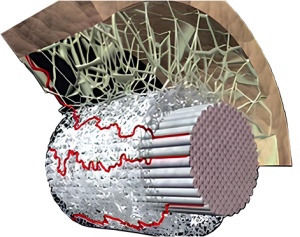
Fascia is a thin tough network of connective tissue that encases, connects and separates soft tissues and organs throughout your body. Fascia helps to control movement and contributes to load transfer. Healthy fascia is slippery and elastic, providing a lubricated barrier that allows for the smooth gliding of muscles, nerves and blood vessels without friction.
Distinct fascial planes are identifiable throughout your body:

Both muscles and fascia are richly embedded with proprioceptors that send messages to the brain about the body’s position in space, and signal the brain when myofascial tissue has been injured or lost its tensile integrity, entrapping nerves, causing imbalances, and inhibiting mobility.
There are several different types of muscle pain that require different treatment approaches:
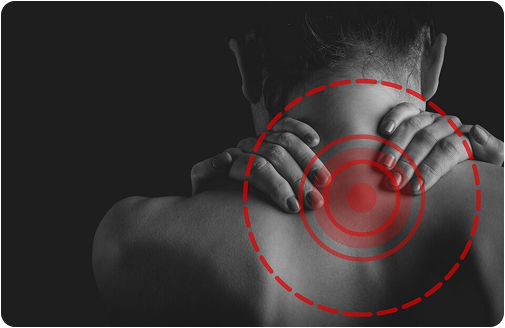
Biotensegrity is a fundamental property of myofascial tissue. It provides an elastic support system that guides the transfer of force loads and enables precise movement. To maintain optimal biotensegrity, myofascial tissues need to be used consistently via physical activity that allows them to stretch and contract. They also need a steady supply of fluids and nutrients that support tissue integrity.

Biotensegrity can be disrupted by tissue injury, repetitive overuse, or disuse. Fascia can form densifications that make it sticky and inelastic. Densified fascia may adhere to other structures, restricting movement and entrapping nerves and blood vessels. Poor hydration can reduce myofascial function, and a high-sugar diet can cause tissue glycation, reducing hyaluronan content that gives fascia its lubricating properties.
Trigger points are small nodules of densely contracted muscle fibers, forming tiny knots that can often be palpated beneath the skin. However trigger points can also form in deep tissues that cannot be manually palpated, especially the deep spinal muscles. Spinal muscle trigger points are often associated with back pain and other types of musculoskeletal pain. To be treated, deep tissue trigger points must be visualized with high-resolution ultrasound imaging.Trigger points typically arise when tissues are subjected to force loads that challenge their capacity. Tissue contraction is a defense mechanism triggered by stretch inhibitors to protect myofascial tissue from tearing. Once the load is removed, contractile tissues typically relax again, but sometimes groups of muscle fibers get stuck in contractile mode, creating trigger points.
Trigger point injections, where a local anesthetic and corticosteroid are injected into the muscle, are sometimes used to treat myofascial pain. However, while trigger point injections may temporarily ease pain, they do not address underlying structural issues like poor posture or overuse that cause trigger point formation. Moreover, trigger points may migrate to different locations in the muscle in response to injections.
Dry needling is a therapeutic technique that uses non-medicated (dry), filament-thin needles, inserted into trigger points to evoke a twitch response, causing the muscle fibers to relax. While superficial trigger points can be successfully treated with dry needling guided by palpation, ultrasound imaging is needed to detect and accurately target deep tissue trigger points.

Dr.Kalika is one of the few practitioners to combine high resolution ultrasonography with Stecco diagnostic methodology to accurately diagnose myofascial dysfunction.. Over time, Dr. Kalika has refined his skills in visualizing trigger points, key coordination points of fascia adhesions, tissue thickening and fascial tears that contribute to the loss of tensegrity. Dr. Kalika and his research colleague Dr. Bubnov have developed their own methodology for diagnosing and treating myofascial pain.
As an expert in diagnostic ultrasonography, Dr. Kalika is able to accurately identify nerve entrapments, and to resolve fascia-nerve interference syndromes that are among the most common causes of musculoskeletal pain.
To restore myofascial tensegrity, Dr. Kalika uses a combination of Stecco fascial manipulation and prolotherapy injections guided by high-resolution ultrasound. Treatment may include multimodal shockwave therapy and fascial plane hydrodissection (aka FLUSH injections).
Dr. Kalika has been researching and treating myofascial pain syndrome for over 20 years, and has achieved positive results with some of the most difficult, chronic and resistive cases of myofascial dysfunction, where other interventions have failed.
Dr. Kalika is a certified practitioner of the Stecco method of fascial manipulation therapy.
Dr. Kalika began his career under the mentorship of two of the world’s most recognised muscle pain specialists. Dr. Valdimir Janda is well known for his classification and treatment of muscle dysfunction, and sensorimotor retraining. Dr. Karel Lewit was the first to describe muscle chain connections. Both collaborated with Dr. Janet Travel, a pioneer in the study of referred pain and the discovery of trigger points. Dr. Kalika learned dry needling from its inventor, Dr. Lewit.
Dr. Kalika mastered diagnostic ultrasonography on his own before teaming up as a research partner with ( WORLD RENOWN EXPERT IN MYOFASCIAL PAIN) Dr. Rostyslav Bubnov, with whom he has published multiple scientific papers. Over the past five years, Dr. Kalika has mastered Stecco fascial manipulation, and he began to use fascial ultrasonography to guide fascial plane and nerve hydrodissection, prolotherapy, and hydrodilatation( FLUSH) injections, combined with multimodal shockwave therapy.
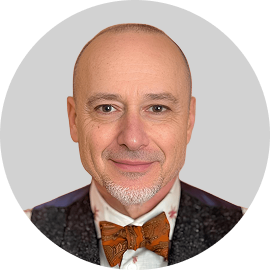
Orthobiologic specialist

Myofascial pain is increasingly recognized as the primary cause of common musculoskeletal complaints. For example, muscles and fascia are cited as one of the main causes of non-specific low back pain, a chronic condition that poses a challenge to doctors because it has no identifiable structural cause, and many clinicians are at a loss when it comes to treatment.
Many studies have linked low back pain and other common pain syndromes to the presence of myofascial trigger points – hyperirritable nodules of tightly contracted muscle fibers that cause local and referred pain. Once identified, there are multiple approaches available for treatment of trigger points. However, without a precise and accurate diagnosis of myofascial pain, it is impossible to implement an appropriate treatment plan.
Diagnosis of myofascial trigger points typically relies on manual palpation, but if the application is imprecise, the trigger points may not produce local or referred pain. Identification of trigger points relies on patient feedback, but results can vary from one clinician to the next due to variability in pressure applied, and to variations in the locus of palpation, making this approach subjective and unreliable.
High-resolution diagnostic ultrasonography provides dynamic images of the myofascia in real time, to identify trigger points, fascial densifications, and muscle activation patterns.
Sonoelastography gives us valuable information about the density and elasticity of myofascial tissue.
The MyotonPro is a digital device used to quantify muscle tone and stiffness
Manual fascial manipulation can help restore densified fascia and release entrapped nerves, blood vessels, and trigger points.
Neuromodulation can help to normalize or modulate hypersensitized nerves as well as restore muscle coactivation once fascia and trigger points are removed.
Ultrasound-guided dry needling precisely targets trigger points using filament-thin, non-medicated needles, providing immediate pain relief.
To diagnose myofascial dysfunction, we combine dynamic high-resolutions ultrasound imaging and sonoelastography with Stecco manual fascial diagnostics. Our combined diagnostic methods help us to quantify fascia stiffness and trace its connections and insertions. Our approach lets us identify fascia densifications and adhesions that cause nerve entrapment, and differentiate thickened fascia from other conditions like fibrosis.
Dr. Kalika has been researching and treating myofascial pain syndrome for over 20 years, with an impressive track record of success in resolving myofascial pain. Our multimodal approach ensures that our patients get an accurate diagnosis, appropriate treatment, and quick and effective pain relief.
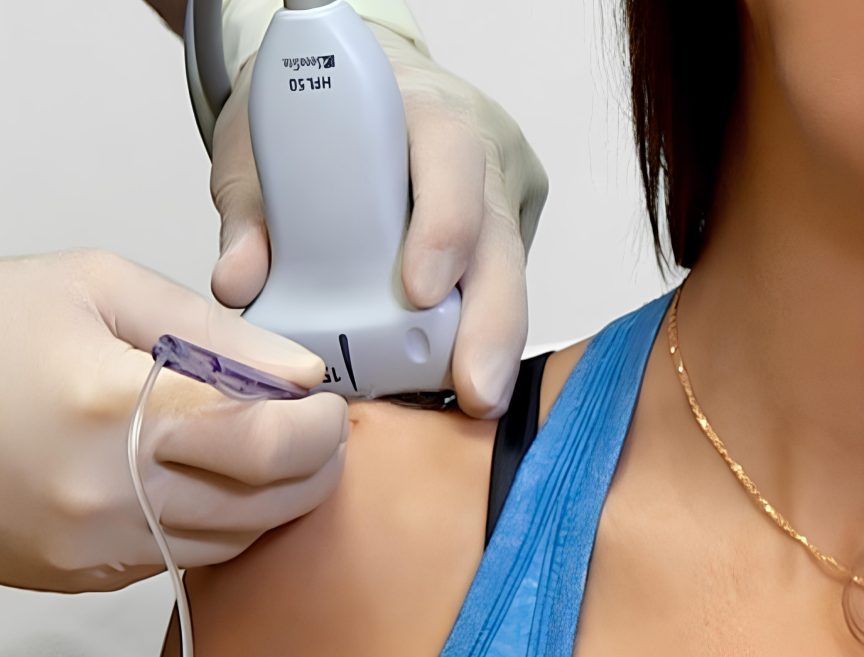
Most people take everyday mobility for granted until an injury occurs or pain sets in. Sometimes pain and reduced mobility seem to arise out of nowhere, with no apparent cause of onset. Regardless of whether your pain is caused by trauma or by something less obvious, tensegrity plays a key role.
Tensegrity refers to tensile integrity – a state where a system of individual components is held together under continuous elastic tension. In the human body, tensegrity is created by the myofascial system, the network of muscles and fascia that work together to produce, control, and guide forces, and to hold the body’s various organs and structures in place during movement.
Tensegrity can be disrupted when myofascial tissues are injured or damaged in some way. When that happens, nerves and blood vessels can become entrapped, preventing them from gliding among other structures and producing pain. At the same time, the elastic tension that governs joint alignment and controls movement becomes compromised, creating motor deficits that undermine mobility and stability.
Factors that disrupt myofascial tensegrity include:
Many doctors do not understand the crucial role of the myofascial system in preventing pain syndromes, movement disorders, and disease. In fact, most medical doctors have no idea how to correct myofascial dysfunction or even recognize it as a factor. They simply treat pain symptoms with medications and eventually recommend surgery.
At NYDNRehab, we understand that the body’s systems work together as an integrated whole, and that treating pain is not enough to eliminate its source. We use dynamic high-resolution ultrasound to explore the myofascial system in real time. Ultrasound imaging lets us visualize muscles, fascia, nerves and other structures in motion, to identify places where tensegrity has been disrupted.
Once we identify the problem, we use the most advanced therapeutic approaches to restore myofascial integrity and promote tissue healing.

Physical therapy is an important part of physical rehabilitation, but it does not always provide a stand-alone solution. Prior to beginning physical therapy, patients need to address underlying issues that contribute to myofascial pain and reduced mobility. Only then can physical therapy restore functional movement.
At least 50% of pain and mobility loss is due to erosion of fascia integrity, including loss of elasticity and tears in different types of fascia. To restore fascial integrity, stability and capacity for force transfer, we need to tighten the fascia and reestablish its elastic properties.
Neglecting to pre-treat your condition can completely undermine your treatment protocol, and in some cases, your condition may even worsen.
Obstacles to physical therapy success include:
At NYDNRehab, we use a broad range of regenerative technologies and integrative therapeutic approaches to resolve issues that stand in the way of successful physical therapy. Our staff is certified in a diverse array of holistic methodologies, and our one-on-one treatment sessions are personalized, based on your unique diagnostic profile.
Once we pre-treat your damaged tissues and eliminate compensation patterns, you will be ready to begin physical therapy.
Myofascial tissue has its own innate healing mechanisms, but injured tissues sometimes need a nudge to accelerate the healing process. Regenerative technologies help to jump-start myofascial healing by stimulating tissue repair at the cellular level.
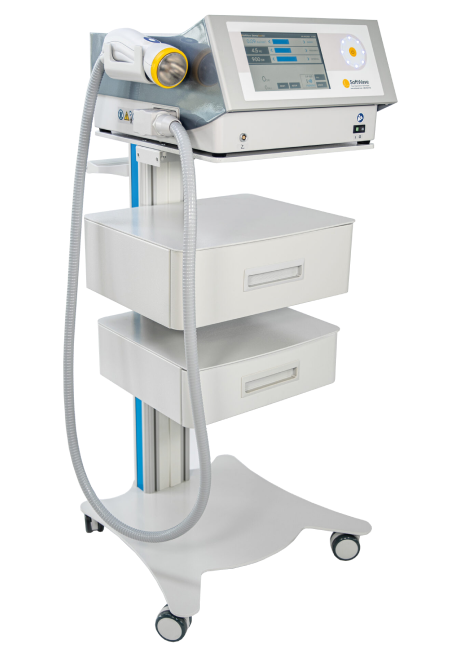
SoftWave is a groundbreaking regenerative mechanotransduction technology that accelerates tissue healing. Its patented electro-hydraulic applicator delivers high-speed soundwaves that can penetrate up to six inches in depth. SoftWave’s defocused and linear focused shockwaves recruit maximum stem cells to the treatment site to promote healing. SoftWave’s wider and deeper penetration using defocused energy is a preferred treatment option for a broad spectrum of conditions, ranging from orthopedic injuries to pelvic health. SoftWave is the only unfocused shockwave technology currently available. According to recent research, SoftWave defocused waves combined with focused and radial shockwaves have maximum regenerative potential.
MyACT is a new type of focused shockwave technology that allows for deeper compression of the focused waves. Its higher frequency allows for precise neuro modulation under ultrasound guidance, with a special linear head for treating myofascial pain. MyACT transforms the mechanical energy of shockwaves into biochemical signals that precisely target damaged tissues. Most injuries involve more than one tissue type. When used together, our advanced shockwave technologies enable us to specifically target multiple tissue types with the most effective shockwave treatment.
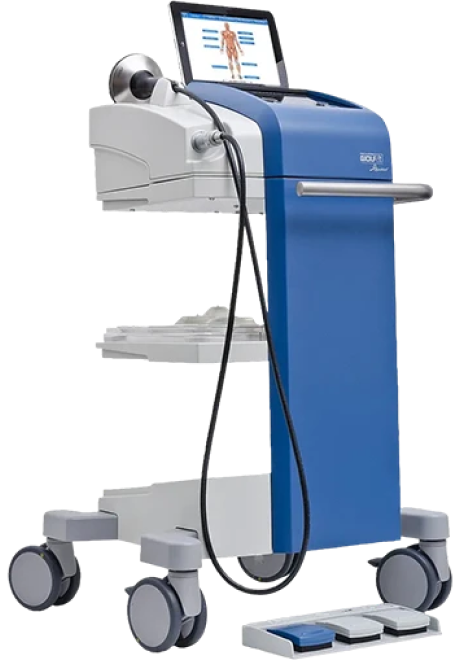

Focused ESWT is used as a regenerative treatment for damaged tendon, muscle and bone tissue. This technology produces high frequency sound waves to stimulate the body’s own reparative mechanisms. It is especially effective for chronic degenerative tendon disorders and myofascial pain syndrome.
EMTT transmits high energy magnetic pulses to targeted tissues that synchronize with the body’s own magnetic fields, triggering a regenerative response. EMTT waves can penetrate deep tissues to target difficult-to-reach tendons, muscles, bones and nerves.
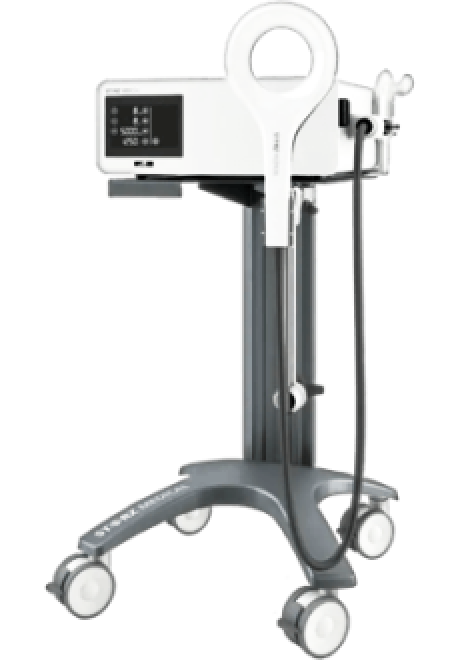
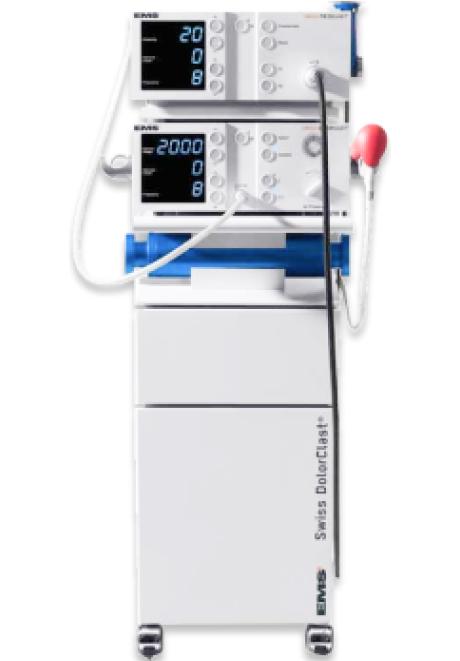
EPAT, sometimes called defocused shock wave therapy, is not a true shockwave. It uses mechanical pressure waves to enhance blood circulation, improving oxygen and nutrient delivery to muscle and fascia tissues, but has minimal regenerative properties.The mechanical properties of EPAT make it especially effective for fascial manipulation in combination with focused shockwaves. We combine EPAT with different types of shockwaves for holistic treatment, without additional cost to the patient.
HEIT delivers high-intensity magnetic pulses to peripheral nerve tissues, to stimulate neuroplasticity. We leverage this FDA-approved methodology to treat pain and regenerate nerve fibers, for enhanced motor control.
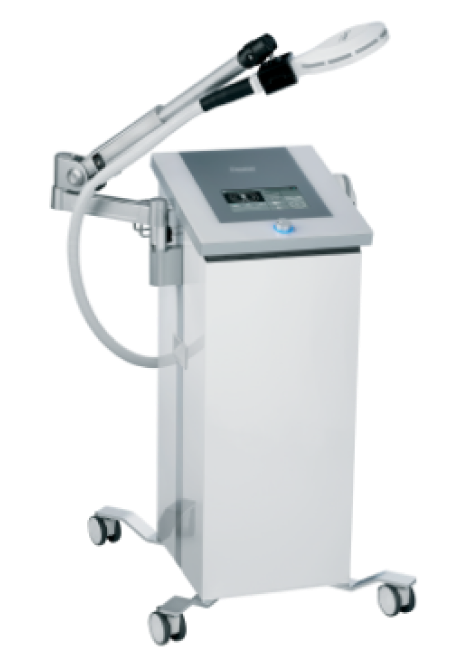
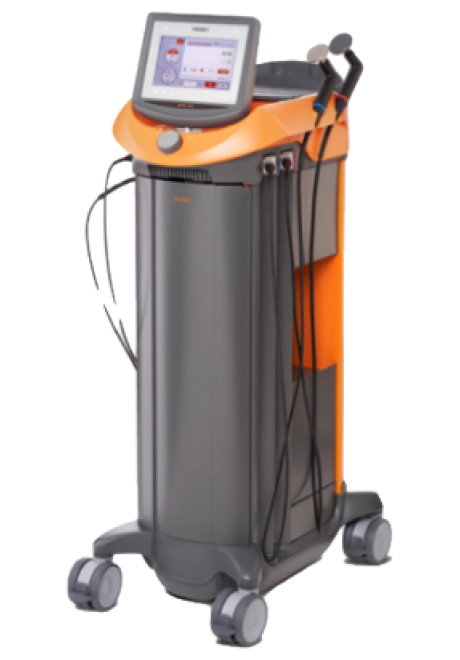
INDIBA is a form of TECAR therapy that helps to restore the ionic charge of damaged cells, for faster injury healing and rehabilitation.
NESA generates a low-frequency electrical current of intermittent and cyclical stimuli that soothes hypersensitized nerves and restores optimal signaling between the autonomic nervous system and the brain. We leverage this FDA-approved methodology to treat pain and regenerate nerve fibers, to enhance motor control.
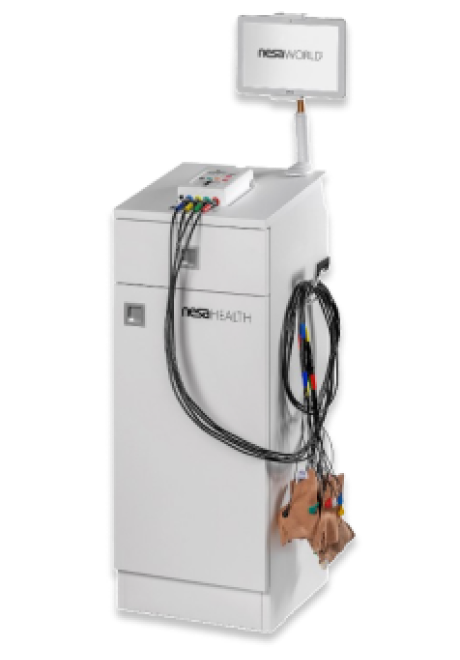
Injection therapies use orthobiologic solutions that stimulate cellular repair by either nourishing or irritating the targeted cells. Guidance by ultrasound ensures that the injected substances hit their mark, for maximum effectiveness.

PRP therapy uses a sample of the patient’s own whole blood, which is spun in a centrifuge to extract a high concentration of platelets. When injected into damaged tissues, PRP initiates tissue repair by releasing biologically active factors such as growth factors, cytokines, lysosomes and adhesion proteins. The injected solution stimulates the synthesis of new connective tissues and blood vessels. PRP can help to jump-start tendon healing in chronic injuries and accelerate repair in acute injuries.
Alpha 2 macroglobulin (A2M) is a naturally occurring blood plasma protein that acts as a carrier for numerous proteins and growth factors. As a protease inhibitor, A2M reduces inflammation in arthritic joints and helps to deactivate a variety of proteinases that typically degrade cartilage.
Prolotherapy uses a biologically neutral solution to irritate stubborn tissues, triggering the body’s innate healing mechanisms to grow new normal tendon, ligament and muscle fibers.
Musculoskeletal injuries often involve fascial tissue that has become densified and/or formed adhesions, entrapping nerves and blood vessels, causing pain and restricting movement. Hydrodissection is a procedure where a saline solution is injected into densified fascia under ultrasound guidance. The solution works by separating fascial layers and freeing up entrapped nerves and blood vessels. We often use hydrodissection in conjunction with manual fascial manipulation.

SM neuromuscular electrical stimulation (NMES) dynamically interacts with the patient during therapeutic exercises, providing real-time sensory, auditory and visual biofeedback to the patient. This breakthrough technology helps patients to recalibrate muscle actions, to optimize joint function. SMNMES has helped numerous patients to avoid unnecessary shoulder, knee and ankle surgeries, even in complex scenarios.
During PENS treatment, filament-thin needles are inserted through the skin into muscle tissue adjacent to the targeted nerve. A low frequency electrical current is then delivered via the inserted needles to stimulate the dysfunctional nerve. PENS normalizes nerve activity, improves brain plasticity and optimizes muscle recruitment patterns. This therapy is so effective that patients typically need only 4-6 treatment sessions.
ShowMotion is an objective tool for joint movement analysis that uses motion tracking sensors, placed on the patient’s skin to collect data about movement quality. The patient performs a series of joint-specific movements, and the data is analyzed by ShowMotion’s proprietary software and displayed on a computer screen. The collected information provides valuable insights about inefficient movement patterns, compensation patterns, and improvements in movement in response to therapy, enabling practitioners to personalize rehabilitation.
Symptoms of myofascial pain syndrome include persistent deep achy muscle pain that worsens over time. You may experience stiffness and reduced mobility combined with muscle weakness and fatigue. You may develop tender muscle knots beneath the skin called myofascial trigger points. Many people have difficulty sleeping due to myofascial tension and pain.
It is important to note that myofascial pain rarely arises on its own – it is frequently secondary to other problems, including:
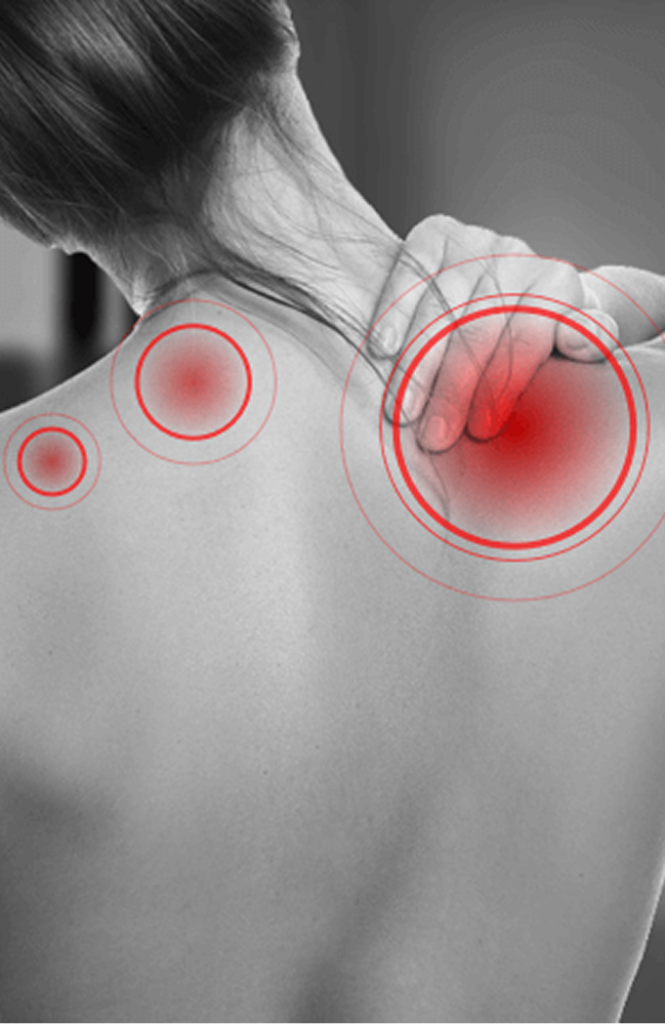
It is not enough to treat the myofascial system alone – to get successful and lasting results, we first need to address other issues that underlie myofascial pain.
At NYDNRehab, we combine the most advanced evidence-based methodologies to treat myofascial pain and dysfunction. Our cutting-edge technologies and advanced therapies are rarely available in conventional medical or physical therapy clinics.
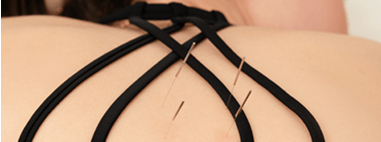
Dry needling is the most effective evidence-based treatment for myofascial trigger points. Guidance by ultrasound imaging ensures fast and accurate results.
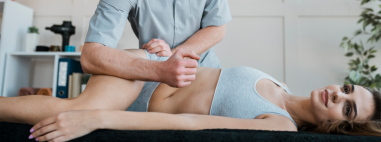
When performed by a trained professional, the Stecco method of fascial manipulation provides an effective evidence-based methodology for restoring the biotensegrity of myofascial tissue. Patients often report immediate pain relief after a single Stecco session.

Hydrodissection is a procedure to treat peripheral nerve entrapment. It uses an injected saline solution to separate entrapped nerves from densified fascia and myofascial adhesions, to quickly relieve pain and restore nerve gliding.

INDIBA therapy is a type of TECAR therapy that helps to restore the ionic charge of damaged cells, for faster injury healing and rehabilitation. The treatment is completely non-invasive and is often used in conjunction with neuromuscular massage and other non-invasive therapies.

MyACT is a new type of focused shockwave technology that allows for deeper compression of the focused waves. Its higher frequency allows for precise neuro modulation under ultrasound guidance, with a special linear head for treating myofascial pain. This innovative shockwave technology transforms the mechanical energy of shockwaves into biochemical signals that precisely target damaged tissues. The efficacy of shockwave therapy for myofascial pain is supported by peer-reviewed evidence.
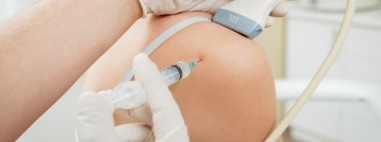
Prolotherapy is an injection procedure that uses a biologically neutral solution to irritate dysfunctional tissue, stimulating the body’s own natural healing mechanisms to encourage growth of new normal myofascial fibers

Independent peer-reviewed research relevant to this treatment approach.
Research authored or co-authored by the clinic’s medical director. The following research publications inform the clinical approach used in this treatment program.